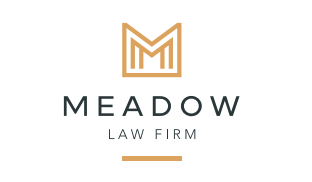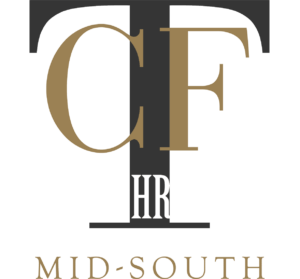Susan B (0:00:05) – Hello, everyone. Welcome to another episode of the leverage Report. Gosh, I’m so excited today to be joined by Dave Cates with the Cates law firm to talk about the recent NEC verdict. So, Dave, thank you again for taking some time to provide some insight on this case. And so let’s just start there. Can you give at the highlights of the trial?
David C (0:00:26) – Sure. So first off, thanks for having me. I really appreciate you inviting me on. Susan. The trial started February 20. We had two days of jury selection. The court understood that this was going to be the first in the nation trial for this case. Wanted to make sure that the court gave us the attention the case deserved for both sides. Called and double the usual size of panel. And we also used a jury questionnaire. So it was a long two days to select a jury. Opening statement started on February 22, and the verdict was rendered a week ago. So march eighth, I want to say, or March 13. Let me look at the calendar. It was four weeks. So it was a long trial. It was March 13. I’m sorry. That was the day the verdict came down. So almost four weeks of trial.
Susan B (0:01:12) – Yeah. Can you give us a little insight about the case in itself? And who were the other attorneys that you were partnered with on this litigation?
David C (0:01:20) – Sure. I’ll start with the second part. First, I was extremely fortunate to partner with two different firms of attorneys on the trial. The lead trial lawyers were Sean Grimsley, Kenzo Kawanabe, and Abby Hinchcliff from Olson Grimsley in Colorado. They’re fantastic trial lawyers, as well as Ben Whiting and Amelia Frenkel from Keller Postman. Also excellent trial lawyers. But I think it should also be added that there was a whole team of lawyers that weren’t necessarily sitting at the table during trial that have all helped work on this case. So there’s been a large group of us working hard for a lot of years, and all of them deserve credit for it. The case itself is related to necrotizing enterocolitis and infant premature formula made from cow’s milk. The theory of the case is that for premature babies, those born under 37 weeks, and especially those under 1500 grams, which are referred to as very low birth weight infants, if they’re fed this cow’s milk based preterm infant formula, they have a much, much higher risk of getting this terrible disease called necrotizing enterocolitis, or neck. It’s an infection where basically the intestines and the colon can become necrotic and die. And in our case, that’s what happened to Chance Dean. He was born at 31 weeks, and he was fed a diet of donor milk, and, to the extent she could, mom’s own milk for approximately eight days. This was March of 2020, and then he was going to be transferred to a hospital closer to our client’s home. So they transitioned him to this formula product, and within six days of starting on an exclusively formula fed diet, chance developed neck. He had three different surgeries over three different days trying to save his life, and unfortunately, it was determined that that was not going to be possible. And Chance passed away.
Susan B (0:03:03) – Yeah, it’s heartbreaking to listen to. When did you start working on this case?
David C (0:03:07) – It’s hard to go back that far now. It’s been over three years since we first got involved in these cases. I know the first case was filed, I believe, in 2020. Our firm wasn’t involved in that, but we got involved with a group of firms in late 2020 or early 2021 to start working on these cases. So it’s been a long process.
Susan B (0:03:28) – Tell us a little bit about the verdict and how you felt, how the team felt when they heard it, what happened there?
David C (0:03:34) – It was an interesting process. The court gave each side 90 minutes for closing argument. Sean gave our closing argument. I thought he did a fantastic job. I thought the defense counsel also did a very nice job with her closing argument. The judge read the instructions, handed them the case at 02:58 p.m. And everybody kind of broke up, left cell phone numbers, figuring we’d be back tomorrow for the verdict to be read. And about 90 minutes later, we got a call from the court that a verdict was in, which was a little shocking to all of us that they were back that fast. So it was a very tense time in the courtroom. I think all of us had walk down the street to get some fresh air and get out of the courtroom that we’d been in for four weeks. And on the walk back, I don’t think many people said much to each other because we were a little stunned that it was that quick. But when the judge read the first count of the verdict, it was the plaintiff’s verdict form, so we knew that we had won something. And there was three counts. Count one was a defective design. Count two was for failure to warn, and count three was for negligence. And we lost count one. We won count two, and we won count three. And then the judge read the general damage award of $60 million, which we’d only asked for 25 closing. So it was a pretty shocking moment, I will say. I believe Sean did a wonderful job. During close of suggesting to the jury that we’re going to suggest 25, but we don’t think a verdict of multiples of that is inappropriate. And the jury was really empowered to deliver what they thought was a just verdict. And I thought that was a really good technique by Sean, for sure.
Susan B (0:05:09) – How do you think this verdict is going to shape the future of the NEC MDL?
David C (0:05:13) – You know, I don’t know the answer to that question. I wish I did. I know there are several trials coming up. I know that the defendants are planning to appeal. They’re planning to vigorously defend this product. And as of right now, I don’t think it matters much, except in the way of showing that the jurors understand our allegations. They understand what’s wrong with what the formula companies have done. They understand what needs to be done to fix this problem. And our hope is that as the verdicts pile up, which we believe they will, there will be some changes into how these products are used. I think it’s important to note, and we said this in the close, we’re not trying to take these products off the market. We understand that there is a subset of preterm infants who this is their only source of nutrition, and without it, they wouldn’t have a future. And that’s not our goal. Our goal is to ensure that for certain infants, this product is not a safe food for them to eat, and that everyone is aware of that fact, including moms, who may have to make the ultimate decision on what their baby gets.
Susan B (0:06:13) – Well, what do you think is the volume of potential cases and babies that have been impacted out there? And would you recommend that people go out and acquire these cases?
David C (0:06:25) – So, I think there are tens of thousands of these cases out there. I think there’s an average of 50,000 premature babies born every year in the US. There’s this much smaller section of those that are very low birth weight. There’s a much smaller percentage of those that ever go on to develop neck. Thankfully, one of the grateful things is neck is it’s not a prolific disease. It’s one of the more rare diseases of prematurity, but it’s five to 10% of premature infants. So if you extrapolate those numbers, and we believe that these cases are viable from 20 years ago, that they’re still good cases, and there are cases happening every day today. This is not over yet. It’s a continuing process. So I think there are still plenty of cases out there. I think they’re good cases, but I think that it’s important before you get involved in acquiring cases to make sure that you’re acquiring the right kind of cases, because there are different kinds of formulas, there’s different kinds of comorbidities that affect these premature babies. So it’s really important to do the screening work on the front end to make sure that you’re not just acquiring cases that eventually won’t be worth the effort.
Susan B (0:07:30) – Right. Yeah. Well, Dave, I know that you’re an expert in the birth injury litigation. How did this particular case differ from.
David C (0:07:38) – So, you know, one of the things that we see in birth injury litigation is usually we’re focused on the doctor or the institution in that they missed something, they misdiagnosed something, they didn’t see something on a scan, or they waited too long to deliver a baby and led to a hypoxic event, something along those lines that typically happened during birth. Or we’re focused on a nurse who misread a fetal heart, tracing, something like that, that led to an injury to the baby in this case. What we’re really focused on is the conduct of the manufacturers of a product that injured this baby. And really, the doctors, as we view them, are kind of innocent bystanders in this whole situation because they’re the ones that counsel the mothers and say this formula product can be used to help. And what we’re finding through the litigation, and I think what the jury really understood is the doctors don’t know all of the risks of these products. They don’t know the magnitude of the risk of these products. They may know there’s a slight risk or that it might increase the risk of neck if you give a baby formula, a preterm baby, but they don’t know that it could be five times the risk or three times the risk. They don’t know how high that risk is. And doctors that we’ve talked to in this litigation, when we show them some of the information that the companies have or what they’re quantifying the risk, as internally, they’re shocked by the amount of risk that it would be and it would change potentially how they would practice medicine. And that’s really what we’re after with this litigation. So we’re less focused on the treating decisions, as you would be in a malpractice case, and more focused on how this product got into the NICU and what they need to tell the users about it.
Susan B (0:09:16) – Dave, I told you, mentioned to you before we got on this call, mean, we were so excited, our team, when we heard the news and the verdict, our team of nurses as I said, there was messages flying around. We were cheering you guys on and so excited to see this, and I’m sure the entire industry was as well. So I really appreciate you taking time on a Friday to connect and give us the insight and tell us what happened and how things went down in the courtroom and how you guys got such a great verdict. So I’m grateful not only for you spending time with me, but just grateful for the team that has been working on this case for years and hopefully setting the stage for more of the NEC cases to follow.
David C (0:09:56) – I appreciate you having me, Susan. And as you said, I’m grateful for everybody that’s working on this litigation on all sides of it. It’s an important case. It’s a righteous cause, sticking up for the most vulnerable babies that exist. And we’re looking forward to doing more. I know some of my friends have trials coming up. We’re going to be rooting hard for them and willing to do whatever we can to help them and hoping that they have success and that we can really make a difference moving forward.
Susan B (0:10:20) – Absolutely. It’s wonderful. Thanks, Dave. Appreciate it.
David C (0:10:23) – Thanks, Susan. Appreciate it.




